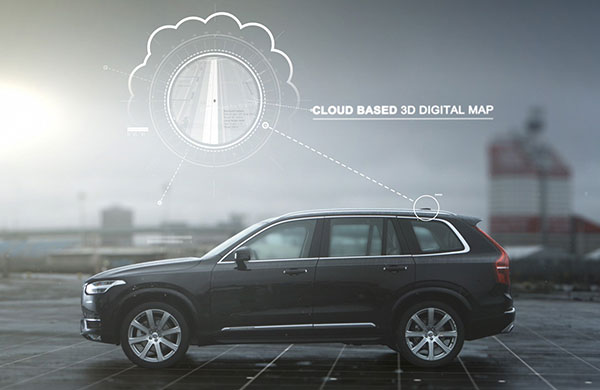Volvo last week revealed the latest developments in its Drive Me project, showing off a complete system that could make it possible to integrate self-driving cars into regular traffic with drivers behind the wheel.
Volvo is making progress toward its goal of releasing 100 self-driving vehicles to consumers on selected roads around Gothenburg — Sweden’s second largest city — by 2017, the company said.
The public pilot project is part of a collaborative effort. Volvo is working with legislators, transport authorities and city officials to achieve sustainable mobility and to help ensure a crash-free future on the roads.
“Autonomous driving will fundamentally change the way we look at driving. In the future, you will be able to choose between autonomous and active driving,” said Peter Mertens, senior vice president of research and development at Volvo.
“This transforms everyday commuting from lost time to quality time, opening up new opportunities for work and pleasure,” he added.
The Other 1 Percent
Volvo is not the only auto company that is actively developing an autonomous driving system — Mercedes and Audi announced similar efforts earlier this year. However, Volvo contends that its technology advances a crucial step beyond what has hit the roads in demonstrations so far.
Some of the other systems are considered 99 percent reliable in real-world conditions, but that isn’t good enough, according to Volvo. Autonomous systems need to get much closer to 100 percent reliability before self-driving vehicles should be allowed to merge into actual traffic.
Toward that end, Volvo’s Drive Me solution includes a holistic sensor that can generate exact positioning, as well as a complete 360-degree view of the vehicle’s surroundings. It has a combined radar and camera unit in the windshield, which can read traffic signs, as well as the road’s curvature, and even detect objects or people in the road. A multiple beam laser scanner and trifocal camera also detects objects ahead. The surround radar system in the front and rear bumpers can locate objects in all directions.
Drive Me uses high-performance GPS and a high-definition 3D map, which together can help provide the vehicle with accurate information about its surroundings.
“This high-definition mapping solution is a crucial step forward for self-driving vehicles,” said Egil Juliussen, senior director and analyst for automotive technology at IHS Technology.
Ordinary People
Volvo’s approach to autonomous driving differs from some others in that it puts regular people in the driver’s seat, and it allows vehicles to cruise city streets along with other traffic.
“They’re also testing this in winter conditions instead of the ideal weather of California,” Juliussen told TechNewsWorld.
“What Volvo is doing is trying to get the cars on the road, which is where you will find out what technical problems you’re going to face. You are only going to find these problems if you test, and you may need to try this in different areas,” he explained.”
“Volvo is going to launch in a city they know, in a city where they have a lot more control,” said Praveen Chandrasekar, automotive and transportation research manager at Frost & Sullivan.
Three key points stand out with Volvo’s Drive Me program he told TechNewsWorld.
First, “drivers need to be in the car, to have the ability to take control, as Gothenburg is known for bad weather,” Chandraseker noted.
“Volvo is also working with traffic control in the city,” he said, “and finally, Volvo has really focused on developing vehicle infrastructure that can read traffic lights [and] road signs, and input all that information to ensure the car is safe on the road.”
The Road Ahead
Equipping vehicles with advanced sensors is just one part of the autonomous driving effort. Development of a compatible infrastructure, including roads and traffic control, is also critical. Self-driving vehicles currently can handle parking and low-speed traffic, but the next level of autonomous driving will require interaction with the roads.
“This is why the high-definition maps are so important,” said Chandrasekar.
“Communication with the traffic control center is going to be important, and Volvo is working on this,” he added, “because the car needs to know what is ahead and down the road a mile or two — not just what is immediately around it.”
While Volvo expects to put its Drive Me cars on the road by 2017, that goal applies to its test vehicles. Mass adoption of autonomous driving tech likely is still way down the road.
“Level four automation, where the car can actually drive itself, won’t likely go mainstream until 2025,” said Juliussen, “with some early adoption in some markets maybe by 2020.”






















































